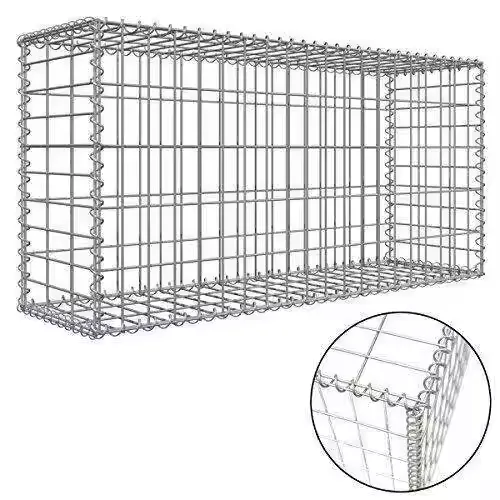-
 Afrikaans
Afrikaans -
 Albanian
Albanian -
 Amharic
Amharic -
 Arabic
Arabic -
 Armenian
Armenian -
 Azerbaijani
Azerbaijani -
 Basque
Basque -
 Belarusian
Belarusian -
 Bengali
Bengali -
 Bosnian
Bosnian -
 Bulgarian
Bulgarian -
 Catalan
Catalan -
 Cebuano
Cebuano -
 China
China -
 Corsican
Corsican -
 Croatian
Croatian -
 Czech
Czech -
 Danish
Danish -
 Dutch
Dutch -
 English
English -
 Esperanto
Esperanto -
 Estonian
Estonian -
 Finnish
Finnish -
 French
French -
 Frisian
Frisian -
 Galician
Galician -
 Georgian
Georgian -
 German
German -
 Greek
Greek -
 Gujarati
Gujarati -
 Haitian Creole
Haitian Creole -
 hausa
hausa -
 hawaiian
hawaiian -
 Hebrew
Hebrew -
 Hindi
Hindi -
 Miao
Miao -
 Hungarian
Hungarian -
 Icelandic
Icelandic -
 igbo
igbo -
 Indonesian
Indonesian -
 irish
irish -
 Italian
Italian -
 Japanese
Japanese -
 Javanese
Javanese -
 Kannada
Kannada -
 kazakh
kazakh -
 Khmer
Khmer -
 Rwandese
Rwandese -
 Korean
Korean -
 Kurdish
Kurdish -
 Kyrgyz
Kyrgyz -
 Lao
Lao -
 Latin
Latin -
 Latvian
Latvian -
 Lithuanian
Lithuanian -
 Luxembourgish
Luxembourgish -
 Macedonian
Macedonian -
 Malgashi
Malgashi -
 Malay
Malay -
 Malayalam
Malayalam -
 Maltese
Maltese -
 Maori
Maori -
 Marathi
Marathi -
 Mongolian
Mongolian -
 Myanmar
Myanmar -
 Nepali
Nepali -
 Norwegian
Norwegian -
 Norwegian
Norwegian -
 Occitan
Occitan -
 Pashto
Pashto -
 Persian
Persian -
 Polish
Polish -
 Portuguese
Portuguese -
 Punjabi
Punjabi -
 Romanian
Romanian -
 Russian
Russian -
 Samoan
Samoan -
 Scottish Gaelic
Scottish Gaelic -
 Serbian
Serbian -
 Sesotho
Sesotho -
 Shona
Shona -
 Sindhi
Sindhi -
 Sinhala
Sinhala -
 Slovak
Slovak -
 Slovenian
Slovenian -
 Somali
Somali -
 Spanish
Spanish -
 Sundanese
Sundanese -
 Swahili
Swahili -
 Swedish
Swedish -
 Tagalog
Tagalog -
 Tajik
Tajik -
 Tamil
Tamil -
 Tatar
Tatar -
 Telugu
Telugu -
 Thai
Thai -
 Turkish
Turkish -
 Turkmen
Turkmen -
 Ukrainian
Ukrainian -
 Urdu
Urdu -
 Uighur
Uighur -
 Uzbek
Uzbek -
 Vietnamese
Vietnamese -
 Welsh
Welsh -
 Bantu
Bantu -
 Yiddish
Yiddish -
 Yoruba
Yoruba -
 Zulu
Zulu
Feb . 15, 2025 08:05
Back to list
Bird Proof Netting Stretchy Bird Netting for Garden
Bird netting serves as an essential tool for protecting crops, structures, and various properties from avian intruders. It is designed to uphold agricultural productivity, preserve architectural integrity, and maintain the ecological balance without harming birds. This article delves into the nuances of bird netting, providing consumers with a wealth of expertise and insights to guide purchasing decisions.
Installing bird netting effectively is another facet where expertise and practical experience play pivotal roles. Proper installation maximizes the netting's benefits, preventing birds from entangling with the material and minimizing maintenance requirements. Ensuring tautness, applying correct tension, securing the netting edges, and using appropriate fixtures are critical steps that not only enhance its effectiveness but also its longevity. Trustworthiness, a cornerstone of consumer confidence in bird netting, is reflected in product certifications and compliance with environmental standards. Many trusted brands offer netting solutions tested for environmental safety, reinforcing their commitment to ecological protection. Moreover, testimonials and reviews from past users provide real-world evidence of their efficacy and offer potential buyers valuable insights into product performance and longevity. The market landscape for bird netting is defined by innovative approaches, such as integrating technology for better performance. Some advanced netting systems incorporate smart sensors that alert users to pressures or tears, ensuring timely maintenance and maximum coverage. These innovations signify a blend of traditional pest control methods with modern technological advancements, propelling the industry forward and setting new standards for quality and efficiency. In sum, whether it's for safeguarding bountiful harvests or ensuring the safety of architectural marvels from bird interference, bird netting stands as a pivotal investment. Embracing expert advice, trusted resources, and acknowledging authoritative insights enables buyers to make choices that not only protect their interests but also uphold environmental stewardship. As such, bird netting is not merely a product but a testament to the harmonious balance between human cultivation and nature's rhythm.


Installing bird netting effectively is another facet where expertise and practical experience play pivotal roles. Proper installation maximizes the netting's benefits, preventing birds from entangling with the material and minimizing maintenance requirements. Ensuring tautness, applying correct tension, securing the netting edges, and using appropriate fixtures are critical steps that not only enhance its effectiveness but also its longevity. Trustworthiness, a cornerstone of consumer confidence in bird netting, is reflected in product certifications and compliance with environmental standards. Many trusted brands offer netting solutions tested for environmental safety, reinforcing their commitment to ecological protection. Moreover, testimonials and reviews from past users provide real-world evidence of their efficacy and offer potential buyers valuable insights into product performance and longevity. The market landscape for bird netting is defined by innovative approaches, such as integrating technology for better performance. Some advanced netting systems incorporate smart sensors that alert users to pressures or tears, ensuring timely maintenance and maximum coverage. These innovations signify a blend of traditional pest control methods with modern technological advancements, propelling the industry forward and setting new standards for quality and efficiency. In sum, whether it's for safeguarding bountiful harvests or ensuring the safety of architectural marvels from bird interference, bird netting stands as a pivotal investment. Embracing expert advice, trusted resources, and acknowledging authoritative insights enables buyers to make choices that not only protect their interests but also uphold environmental stewardship. As such, bird netting is not merely a product but a testament to the harmonious balance between human cultivation and nature's rhythm.
Latest news
-
Shipping Plastic Bags for Every NeedNewsJul.24,2025
-
Safety Netting: Your Shield in ConstructionNewsJul.24,2025
-
Plastic Mesh Netting for Everyday UseNewsJul.24,2025
-
Nylon Netting for Every UseNewsJul.24,2025
-
Mesh Breeder Box for Fish TanksNewsJul.24,2025
-
Expanded Steel Mesh Offers Durable VersatilityNewsJul.24,2025











